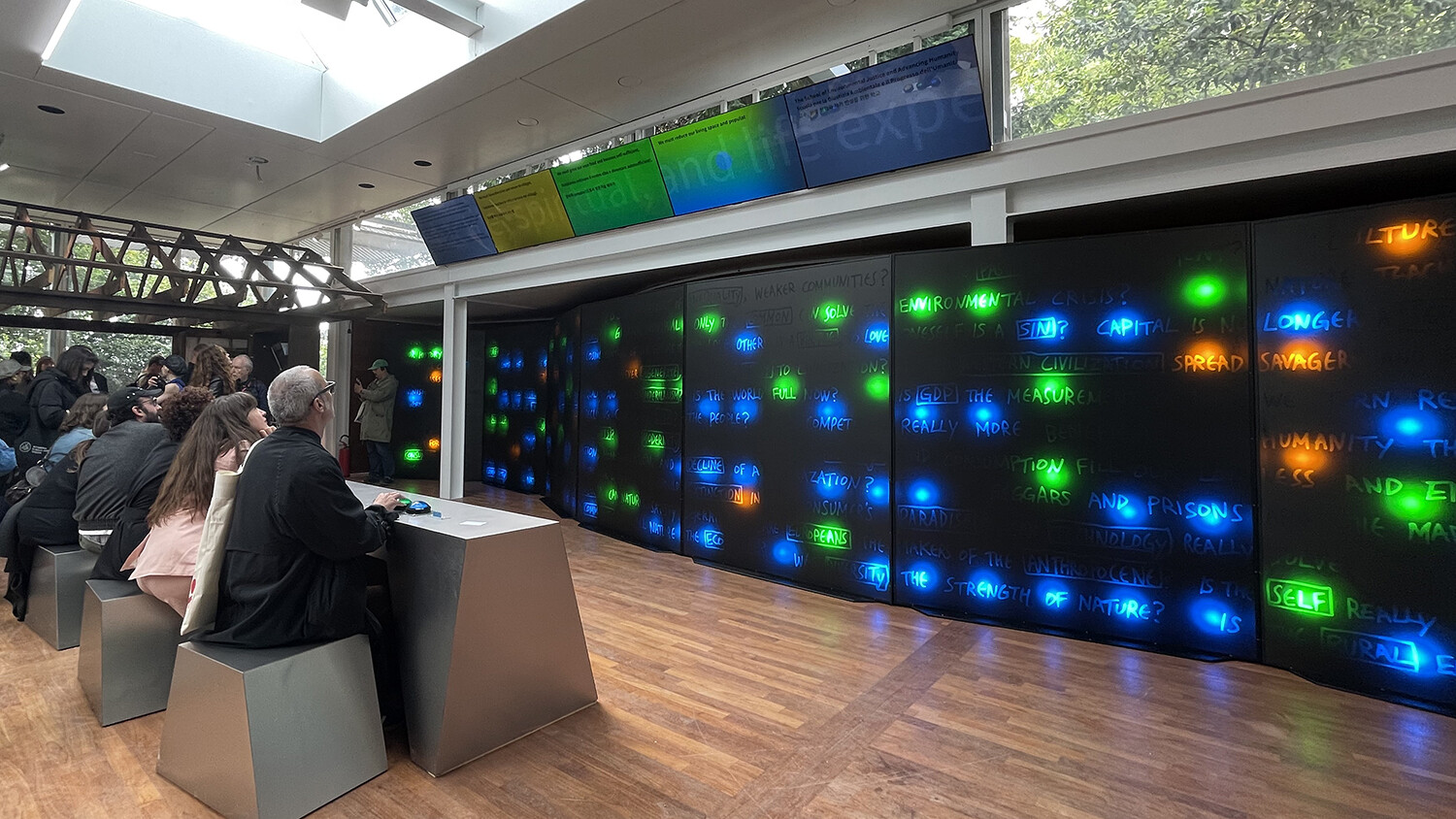May 20–November 26, 2023
Giardini della Biennale
30122
Italy
Hours: Tuesday–Sunday 11am–7pm
koreanpavilion2024@gmail.com
Artists: Soik Jung, Kyong Park, Yehre Suh, WoonGi Min, Yerin Kang, Lee Chi-hoon, Zoosun Yoon, Ahram Chae, Nahyun Hwang, David Eugin Moon, Wolsik Kim, and Jaekyung Jung
The Korean Pavilion opens the newly-commissioned exhibition 2086: Together How? at the 18th International Venice Architecture Biennale, curated by Artistic Directors Soik Jung and Kyong Park. Bringing together architects, community leaders and artists, the project asks how we might work together to endure current and future environmental crises until 2086—the year when the global population is said to peak. The premise of 2086: Together How? is to interrogate our Faustian ideology of progress and how we have sought unlimited material pleasure through industrialization, westernization, and liberalism, and our reparations of the past colonial exploitations is the first step in our reconciliation with nature.
Central to the exhibition is The Game of Together How: a quiz show-style game that invites visitors play the future “climate endgame” by asking to respond to the questions on social, political, and issues from various fictional representatives of future organizations. Their answers are registered by 420 colored lights on 11.9m x 2.2m scoreboard, which also illuminates 44 questions that ties the “climate endgame” with the history of Progress. The cumulative daily scores are then written onto an “Ecogram” made of seven blackboards, each representing the global CO2 level, temperature, sea level, refugees/migrants, population, water, and Gini coefficients. Showing the yearly climate change from 2023 to 2086, from the beginning to the end of the exhibition period, these numbers and scores will be accessible at korean-pavilion.or.kr and on Instagram, together with periodic reports from Kyong Park.
The game will be surrounded by three collaborations between architects and community activists focusing in urban and rural conditions in South Korea. In Gunsan city, the Society of Architecture (SoA) collaborated with Udangtangtang (UDTT)—a young group revitalizing the city’s old market and hosting local culture-based guerrilla events—to explore how contemporary nomads can revive local legacy. Their designs for Destructive Creation that reintroduce nature into abandoned areas are presented inside a partial recreation of a demolished house.
In Ruin as Future, Future as Ruin, Urban Terrains Lab collaborated with an activist organization Space Beam to explore the historic community of Baedari in East Incheon. Having stopped the completion of a major highway that destroyed much of its community, Baedari’s resistance raises urgent questions about its future between post-Anthropocene and neo-Holocene life. The resulting installation presents the evolution of the city of Incheon, including its past enlargement into the sea and the possible return of its original shoreline under rising sea levels. This circular installation presents the history of Baedari, with fragmented collage of two large panoramic paintings from East Incheon artists.
In Migrating Futures, N H D M investigates the spatiotemporal landscapes of foreign migrants in the rural communities around Ansan city. Inciting possible transcultural and lateral coexistence beyond existing national and religious borders, N H D M provides six collages of future territories for self-determination by peripatetic subjects at the periphery of urban and national centers. In collaboration, Wolsik Kim presents various shamans of movements where, people move to follow the sun and hide from the wind in A Community of Difference. Embodied as pop idols; animals, such as bears, tigers, and lions; or objects, such as desks or stones, some people think they resemble gods.
The exhibition premiers A Future, a video project about a fictional “child-god” who can predict the future of climate. Her prophesied images generate special exhibitions and performances about her around the world that receive billions of views each day. With everyone desperate to know whether they will survive, she becomes the focus of both admiration and fear among the public and officials.
Through these works, 2086: Together How? asserts that not only will the environmental crisis force us to come up with a better ecocultural paradigm, more importantly, it will be our best and last chance to become a better humanity.














